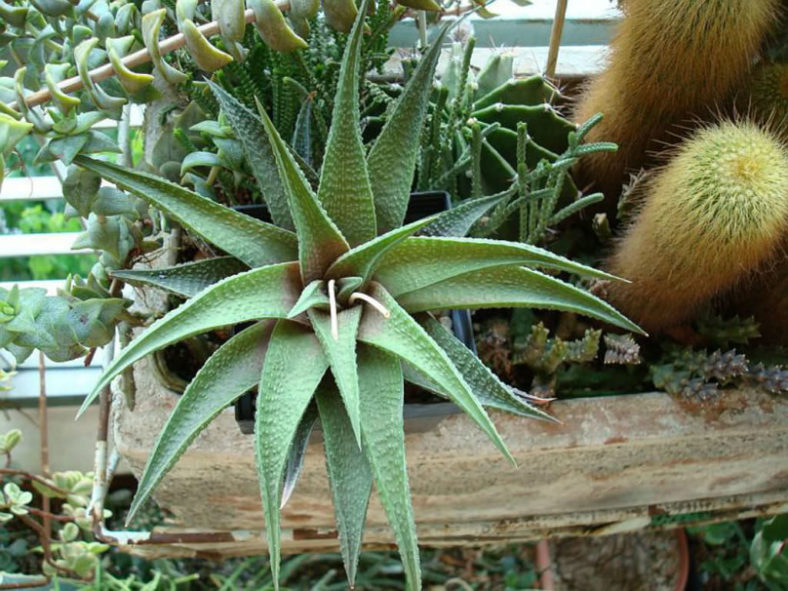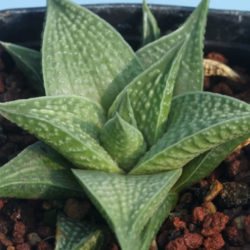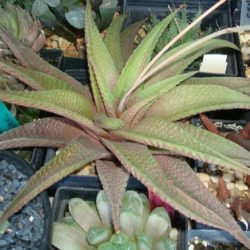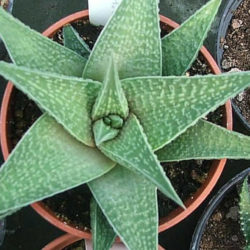Scientific Name
Haworthiopsis 'Jade Star'
Synonym(s)
Haworthia 'Jade Star'
Scientific Classification
Family: Asphodelaceae
Subfamily: Asphodeloideae
Tribe: Aloeae
Genus: Haworthiopsis
Description
Haworthiopsis 'Jade Star', formerly known as Haworthia 'Jade Star' is a small, slow-growing succulent that forms rosettes of green leaves with small raised tubercles. The rosettes can grow up to 6 inches (15 cm) in diameter.
The white flowers have green to brownish veins and appear on a long, slender stalk, mainly from late spring to early summer.
Origin
Haworthiopsis 'Jade Star' is a hybrid that results from a cross between Haworthiopsis koelmaniorum (formerly known as Haworthia koelmaniorum) and Haworthiopsis limifolia var. ubomboensis (formerly known as Haworthia limifolia var. ubomboensis).

Hardiness
USDA hardiness zone 9a to 11b: from 20 °F (−6.7 °C) to 50 °F (+10 °C).
How to Grow and Care
These succulents are not considered difficult houseplants to grow. If you can keep a pot of Aloe alive on a windowsill, chances are you can do the same with a dish of Haworthia. As with all succulents, the most dangerous situation is too much water. They should never be allowed to sit in water under any circumstances. At the same time, these little decorative plants can be grown in interesting containers such as teacups and even miniature baby shoes. If you're given a Haworthia in such a container, ensure the container has adequate drainage.
Haworthias are small, usually between 3 and 5 inches (7.5 cm and 12.5 cm) in height, and relatively slow-growing. Therefore, they are often grown in small clusters in wide, shallow dishes. Over time, clusters will naturally enlarge as the mother plant sends off small plantlets. When the cluster has outgrown its container, repot into a new wide and shallow container with fresh potting soil in the spring or early summer. This is also the time to take offsets for propagation.
See more at How to Grow and Care for Haworthia.
Links
- Back to genus Haworthiopsis
- Succupedia: Browse succulents by Scientific Name, Common Name, Genus, Family, USDA Hardiness Zone, Origin, or cacti by Genus
Photo Gallery
Click on a photo to see a larger version.


